Tips for Creating an Effective Employee Mentorship Program
in Collaboration, Culture Change, Employee Engagement, Leadership/by Maddie DavisIs Team Conflict a Good Thing or a Bad Thing?
in Conflict Management, Culture Change, Team/by Darren BradyTeamwork is a difficult thing to manage in today’s workforce. Employees, especially millennials newly entering the workforce, are looking for satisfying jobs where they will be able to have their say and see where their efforts are bearing fruit. While this isn’t a bad quality, it can be challenging when working with teams, as there will always be differences in opinions about how things should be.
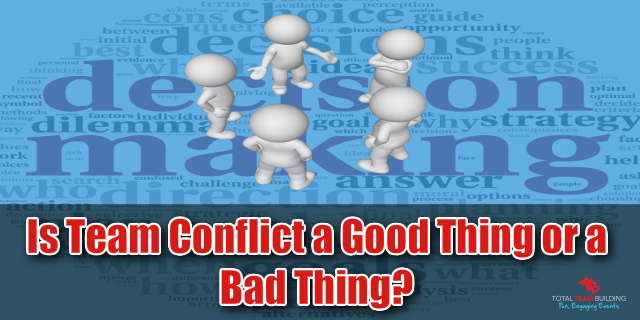
Is it okay to have conflict among team members? If it is, what does good conflict actually look like in the workplace? These are the issues I’m going to be addressing in this article.
Is Conflict a Good Thing or a Bad Thing?
Conflict, when done in the right way, can be the best and most productive thing for your team. Positive conflict happens when ideas are discussed in a way that does not discourage people from speaking or debating. Only when you have established a culture of trust can employees discuss anything to do with the project without fear of being abused or shut out for an idea that may not make much sense.
Additionally, employees need to be able to resolve any issues they have with each other at work. This can only happen through positive conflict situations, where employees feel okay about confronting each other in regards to certain situations at work.
Although positive conflict may still feel uncomfortable, positive conflict actually resolves the issue and allows teams to move on to something more productive. It results in a happier and healthier workplace where things don’t fester over time in people’s minds, and instead are brought into the open and dealt with quickly.
How to Identify Healthy Team Conflict
There are a few things you need to ask if you want to identify which conflict in a team is healthy and which is not:
- Is the conflict solving an issue?
A conflict that isn’t based on a real issue can be unproductive and harmful to your team. Make sure healthy conflict surrounds real issues that will make a difference to the team in one way or another. The goal should be based on producing the best possible solution in the shortest amount of time.
- Are people respecting each other?
If your employees are not acting respectfully towards each other, then you as the leader need to step in and control the situation. There should be a respectful discussion going on that allows everyone to speak their mind without fear of reproach or bullying. Creating a culture of trust helps with this.
- Are new ideas being presented and debated?
Sometimes conflict involves the same issues being presented over and over again. This is not a healthy way to debate, because nothing new is getting solved or changed by the discussion. Instead, once something is solved and debated it should be put to the side so that new issues can be discussed instead.
- How competitive are employees with each other?
Top performers tend to be more competitive towards each other than the average worker. To help control this and turn it into something good, let the employees compete with each other in certain areas, as long as they are working towards a team goal and making progress.
- Is there a set of rules being followed for the discussion?
Healthy conflict should follow a set of rules of engagement that will guide employees on how to treat each other during a discussion. Having this set of rules will make everything go more smoothly and help employees to know how they should or shouldn’t approach a discussion. Simply put no interpersonal politics and personal attacks. Conflict should be limited to the ideas and concepts with the ultimate goal of producing the best possible solution for the team.
- Do employees agree at the end of the conflict?
While your employees may never see eye-to-eye exactly, they should be able to come to a resolution and make a decision at the end of the conflict session.
Promoting Useful Conflict within a Team
As the team leader, you can help to promote healthy conflict within your team. Creating the right company culture that focuses on trust, adaptability, flexible mindsets, openness, and acceptance of new ideas will help your employees embrace positive conflict.
Remember that conflict will never be particularly pleasant for anyone, because it does involve two or more people with differing opinions, but if it’s done in the right way it can engage the team in a positive way.
Conclusion
Conflict doesn’t have a good reputation in the business world, but it’s something that shouldn’t be avoided. Instead, usher in positive conflict and great discussions with your employees to help create productivity and useful changes in your workplace.
About Total Team Building
Total Team Building specialise in teams…we facilitate fun engaging experiential team building activities designed to enhance team culture, leadership, communication and collaboration. For more information about how Total Team Building can help you and your team contact us today.
LINK SOURCES
No Assholes On The Team
in Culture Change, Leadership, Team/by Darren BradyThe Perth Scorchers are so far the most successful team in BBL history, having won three championships and coming runners-up twice in its 7-year history. The coach of the scorchers is nonother than former Australian cricketer Justin Langer who played 105 Test matches for Australia between 1993 and 2007, scoring 7696 runs and 23 centuries. Having been a key player in great Australian teams captained by Steve Waugh and Ricky Ponting, Justin knows what it takes for a team to be successful.
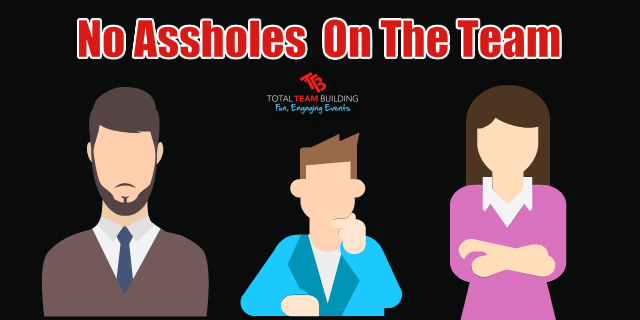
One of his philosophies that underpins the scorchers success and ethos of his team is the phrase “No assholes on the team”
“It is a reminder that we don’t want knobs in our organisation,” Langer explains.
Langer learned about this philosophy from Stanford Business School professor Bob Sutton’s book “The No Asshole Rule: Building a Civilized Workplace and Surviving One That Isn’t.”
Put simply demeaning people do terrible damage to others and to their companies. It is like cancer that will spread and destroy the culture of your team creating a toxic environment.
I recently spoke with Darren Demello of Perth’s 6PR radio station about the “No Asshole Rule” when it comes to building teams, poor leadership, character, and behavior. Click below to listen to the podcast.
Recommended Reading
Unifying a Team of Diverse Members
in Culture Change, Team/by Darren BradyWe hear a lot about diversity, because of the ever-changing world around us. But, when you’re forced to face it and learn how to unite a team of highly diverse people, how do you do it?
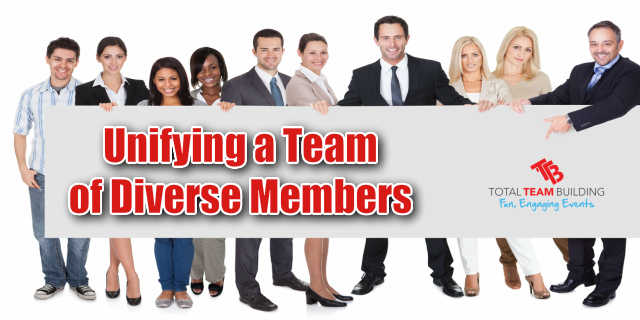
Team Diversity is Helping Your Organization
First of all, it’s important to understand that diverse team members are actually a good thing for your organization. It might not always seem like it, but diversity can aid an organization in problem-solving, creative thinking, and productivity. These benefits can only happen if you can properly manage your diverse team of employees.
How can you manage a diverse team? There is no easy answer to this question and no solution that fits into all situations. However, there are a few great tips that can help you find the solutions to your what’s happening in your own team.
Cultivating Respect
Respect The Uniqueness Of People. Above all else, respect is necessary if you want to have a rightly functioning group of diverse people. Not only should you respect them all individually, but you have to create a culture of every team member respecting one another.
With diversity comes a plethora of viewpoints on every issue, a variety of lifestyles, and a lot of different cultural differences. This is difficult to navigate at times, but if you train your employees to always act with respect for one another, and if you also embrace that principle, then you can manage to work together more peacefully.
Only when you appreciate that everyone is unique can you begin to accept people as they are. Respect their uniqueness. Support them in their individual learning and developmental process. Be grateful for having attained this level of awareness. Developing your awareness is a life-long personal challenge on the path toward perfection.
Clear Expectations
Acknowledge to your team that you are made up of a lot of diverse people, and make sure they understand that this was intentional. It’s important that each member knows that they belong on the team and that it wasn’t an accident that brought them there. Show each member why they are important to the team and what you expect from them.
Your entire team should understand your expectations for them as a team, and as individuals. It is much easier to unify people once they have something to work towards!
Inclusive Decision-Making
You are only one person with one way of thinking. If you want a truly diverse team to last, you’ll need to make sure they can be involved in the decision-making process in a meaningful way. Don’t exclude your team from important decisions that need to be made. Ultimately, you are the final authority and the one who makes the call. BUT, you should involve your team in the process of deciding what that call will be and how you as a team will proceed towards your goals.
Teams that make decisions together are more likely to be able to stick to those decisions and create fantastic results. If your members feel like they are not involved in the process, or worse that only a few people were involved and not the entire team, you may lose your unity very quickly.
Be Flexible to Change
Leaders often make the mistake of assuming everyone will respond the same way to their leadership style. This simply isn’t true, and many leaders create problems when they act on this assumption. Don’t be one of those leaders!
Instead, be willing to adapt your leadership style to each team member, according to what will work best with them. Your goal isn’t to make friends and keep everyone as happy as possible, but if you can manage to do that along the way by switching up how you do things, why wouldn’t you? People from diverse backgrounds won’t always respond the same way to your leadership, and that’s okay. Be willing to change up how you do things in order to help make every employee as productive as possible.
Teach Healthy Conflict
Where diversity exists, conflict always follows. It’s natural, and not always unhealthy if it’s done in a productive environment. Plan times of structured conflict where employees are able to discuss their own diverse ideas and thoughts without criticism, just healthy and useful conversations. Make sure to mediate these discussions closely and keep employees from ruining the atmosphere with negative comments or personal attacks.
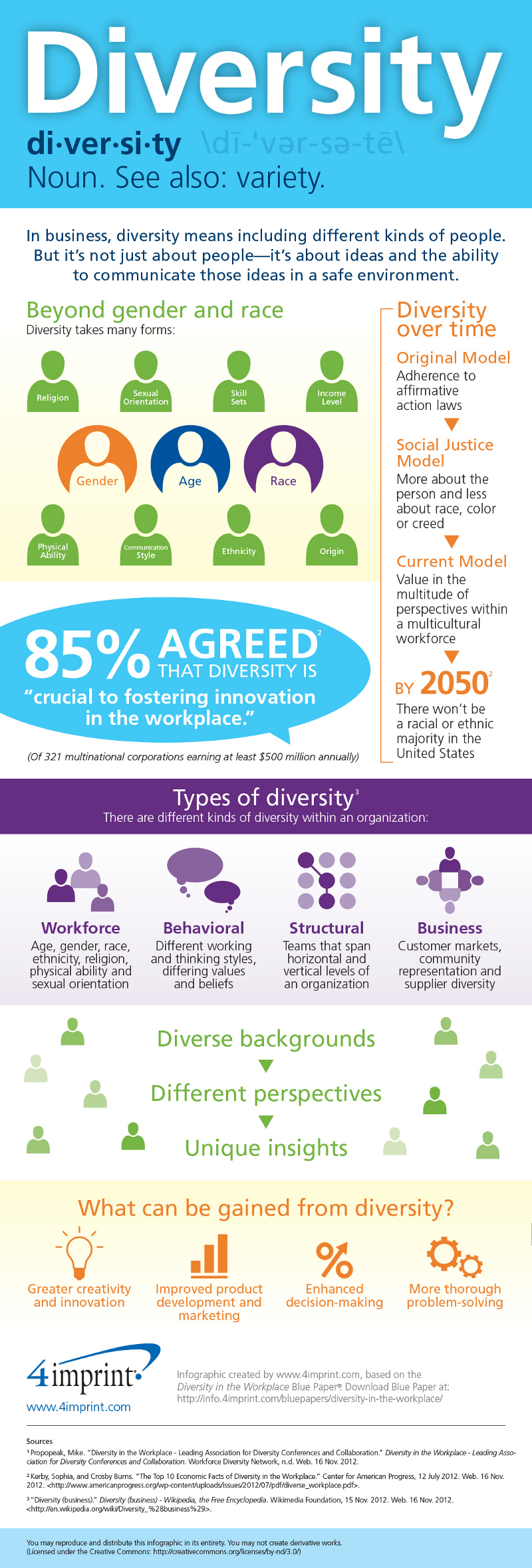
Infographic courtesy of 4imprint based on the Diversity in the Workplace Blue Paper
Conclusion
Managing a diverse team is not going to be easy, but the benefits are clearly there if you can be successful. Use these tips to help guide you towards a healthy team full of diverse thoughts and different ideas.
7 Obstacles That Keep Leaders from Empowering Their Teams
in Culture Change, Employee Engagement, Leadership/by Darren BradyEmpowerment is a tricky topic in most workplaces, because it disrupts the normal working dynamics of an organisation. Most employees would prefer more empowerment rather than more structured decision-making. However, many leaders are not willing to work towards this same goal. In this article, I want to explore some of the reasons why leaders aren’t willing to empower their employees.

Benefits of Empowered Teams
Benefits of empowerment are clear. When employees are given the freedom to make their own decisions about matters in their jobs, they are able to increase their productivity. Since they will spend less time calling on their superiors to assist them, they can more quickly solve problems on their own with the resources that are given.
Empowered employees are also invested employees. Jobs that are too structured and rigid do not attract employees who want to stay put in their job for long periods of time. When more power is given to the employee to deal with problems that arise, they will be more willing to stay in that job versus looking for other jobs.
Managers and leadership personnel will also be less stressed out in empowered workplaces. Employees who aren’t allowed to make their own decisions will call on their leaders often, even for small problems that could have been solved easily. Instead, leaders over-exert themselves in an attempt to do their normal job responsibilities while also dealing with interruptions from employee problems.
Why Leaders Don’t Empower Their Teams
So, if the benefits are so clear then what stands in the way of employee empowerment? Here are some of the most common obstacles:
1. Laziness
To be fair, it takes a lot of effort to create an environment that promotes employee empowerment. It is not an easy job for leaders in the beginning of the process. This is one of the main reasons that leaders don’t bother with trying to empower employees. It is simply easier not to try something like this that may not necessarily work well and may not be worth the efforts you put into making it happen.
2. Fear of Position Loss
Leaders who are in lower management positions can sometimes fear that if their employees are empowered then they will lose their leadership positions. In theory, if employees can make their own decisions and do more for themselves, management positions could be consolidated or removed entirely.
3. Inconsistency
There are two levels of inconsistency that can occur. First, leaders may be afraid that their employees will make inconsistent decisions that will lead to customer dissatisfaction. If one employee makes the choice to handle a problem one way for a customer, but another employee makes the opposite decision later on, that customer can become very dissatisfied with the service they were provided.
The second instance of inconsistency is when the leader is not consistent enough in their efforts to promote empowerment. It is necessary for leaders to stay the course and not deviate back towards complete hands-on management. If employees can’t be sure that they will remain with the power to make their own decisions, they will be less motivated to stay empowered.
4. Reliance on Programs
Empowerment programs are not particularly effective for all workplaces, because empowerment needs to be tailored to fit the specific working environment. Leaders who rely on these types of things have probably seen that they are not particularly effective and will be unmotivated to use any sort of empowerment programs again in the future.
5. Lack of Clear Empowerment Goals
Leaders that have different definitions of empowerment than their employees won’t be able to achieve anything substantial. Both employers and employees need to be clear on what sort of empowerment goals they are reaching towards. “Be more empowered” is not a clear enough goal. Instead, “recommend alternative solutions” or “handle small tasks on your own” are clearer goals to reach for.
6. Wrong Perceptions
Sometimes leaders imagine that customers and employees are both conniving and are working against the company. Because of this, they are more hesitant to allow employees to make their own decisions. If the customer tricks the employee, they might make a costly mistake. If the employees are working against the company, they might make decisions that are counter to what’s best for the company. These perceptions prove to be false most of the time, but they do still exist.
7. Working Roles
Employees that are very stuck in the specific roles of their jobs will not be as willing to become empowered. Roles that are highly rigid and structured can keep employees from wanting to go the extra mile or take more steps to get things done on their own.

employee engagement infographic – An infographic by the team at Dale Carnegie Training Employee Engagement Infographic
Conclusion
At the end of the day it all comes down to the culture you foster within the workplace. Getting everyone on board and empowered takes work but it is usually worth it in the end. One strategy is to sit down with your team and establish a team charter that will align the companies goals and values with that of the individual’s goals and values. This helps to set the direction of where the team is heading and reaffirms the reasons why they work for the company in the first place as they need to feel good about the work they are doing and the positive impact it has on the team and the greater community.
Team charters also go a long way specifically outlining each person’s role and what they are responsible for. Remember you have hired these individuals for a reason so let them shine at what they are great at and they will be far more engaged and empowered.
Qualities of a Good Team Player Versus a Bad Team Player
in Culture Change, Team/by Darren BradyTeamwork is very present in business today. As a result, many HR departments and hiring managers are looking for those who are going to work well within teams to achieve their goals. Being good at working with a team, sometimes referred to as being a “good team player”, can come in handy for advancing your career and doing better in your workplace.

What Makes Someone a Good Team Player?
Those who are good at working in a team don’t necessarily act or work the same way, but what they do have in common is that you can count on them to benefit the team rather than breaking it apart. Not all employees are good at being in teams. There is a certain set of qualities you can look for in a good team player versus a bad team player.
Misconceptions About Team Relations
Hearing the phrase “good team player” makes it sound as though the person you’re referring to goes along with the flow of the team and does their work without questioning anything. This, however, is not the ideal way for a team member to act and would actually make them a poor team player.
Keeping the peace in a team is useful, but controversy can actually bring about a lot of good solutions to problems and add new points of view to a conversation. The definition of a good team player is not someone who is overly compliant and unquestioning of the leadership, but someone who pulls their own weight, contributes positively to the team, and works hard to achieve the goals of the team.
Qualities of a Good Team Member
These are the qualities that a good team player should possess:
- Reliability
Team members rely on each other heavily to get work accomplished and reach milestones and goals. Good team members must be reliable. Without reliability it doesn’t matter how good of work you do.
- Understanding of Strengths and Weaknesses
If you want to contribute as much as possible to the team, you need to know what you have to offer and what it is that you’re bad at. This will allow you to work more in the areas of your strength and add value to the team while letting others help you fill in your weaker spots.
- Good Communication Skills
Communication within a team is needed on any project. A good team player is able to share information and resources with other team members and communicate whatever is necessary.
- Flexibility
Teams cannot always make exceptions and work around your needs. You have to be flexible to accommodate the needs of the team and to work well with others.
- Willingness to Compromise
Recognizing that your point of view and your ideas are not always going to be embraced is important. It’s a good skill to learn how to compromise. However, that doesn’t mean you should let others walk on top of you and dismiss your ideas.
- Listening
Learning to listen to your teammates can help you to understand everything that’s going on within the team and what needs to happen. Knowing where others stand on issues is important before you can give an informed opinion or idea.
- Commitment to Team Goals
The primary goal of a team is to accomplish some goal or purpose. In order to be a good team player, you have to be committed to that goal and keep it in focus.
- Problem Solving
Anyone can point out problems. However, those who not only point out problems but also offer a solution are much more valuable to any team.
- Support Team Members
Sometimes your team members will have more success than you or will need help from you. In either case you should be a supportive team member in order to be of most use to your team.

Other Opinions About Teamwork and Team Dynamics
Some professionals have a differing opinion. In the opinion of others, team players are not useful and businesses should look more for those who can do the job on their own if necessary. By finding those capable of doing the job themselves, you’re more likely to have a stronger team.
This is a different way of thinking about teams, and while it’s not the best way to arrange a team there may be some merit in this thought.
Conclusion
Teams need people that work well together to accomplish a unified goal. Without this, a team will fail. Whatever you believe makes someone a useful part of a team, the qualities listed above will always help you to succeed in teams.
Team Building helps build working relationships and better team players?
Total Team Building specialise in teams…we facilitate a range of team building activities that help build team morale, trust, leadership & communication within a team. For more information about how Total Team Building can help you contact us today.
How To Convince Your Team to Buy Into Change
in Culture Change/by Darren BradyThe Problem With Change Management
When we hear the word “change”, a lot of different thoughts and emotions can come to our minds. Change in your personal life might make you a bit excited or anxious, yet changes at work nearly always make people feel uneasy, angry, sad, lethargic, and a handful of other negative emotions. Some employees might be excited for the upcoming changes, but the majority will be feeling some version of upset.
Why do employees resist change so much? What makes workplace change so much more difficult to handle than other types of change? These are the issues that face any team leader as they approach a time of change management. This article will talk about some of the most effective ways of dealing with change and helping to convince your team members that it is a good thing which they should embrace. These are strategies that have been put into practice and proven to be useful over the years.

What To Do To Help Your Team Adapt To Changes
- Consider Bringing in Help.
Going it alone might make the process of change more difficult than it should be for you as a leader. If you can bring in a company or consultant who specializes in transitions and corporate or team change they might give you great direction on how to proceed while also supporting you in taking the necessary actions with your team.
- Be Patient, But Persistent.
Remember that not everyone will embrace this change at the same rate. Some team members are going to buy into the ideas very quickly. The majority of people will take a little longer, but not too long. Unfortunately, there is nearly always a small group of people who might take months or even years to fully adapt to the change being made.
No matter what, you can’t forget these employees as they are still a part of your team. They have experienced some form of change trauma, and that can be hard to recover from unless you are well supported and moved into the new system properly. Stand your ground on the fact that this change is both necessary and beneficial, but give them the time they need to see that for themselves as well. Don’t force anything on your employees that will make them feel rushed and uncomfortable.
- Demonstrate Why Change is Necessary.
Find something solid and visible that proves the need for the change which is being made. This might be something to do with one of your products, a video about the inefficiency, pictures of something which is going wrong in the company or for the consumer, or anything else. The point of this is to show your team what’s happening and why it’s bad for business.
Speak to your team logically and reasonably if you want a better chance at winning them over. During uncertain times, it’s good for team morale if the leader is doing a good job at presenting the evidence of a need for change while also showing the chosen solution to the problem.
- Practice Empathy.
Your team members will all be feeling differently about this upcoming or current change, and you MUST acknowledge those feelings as valid and respond to the concerns raised by employees. One way that some companies have achieved this is by hosting an anonymous forum for employee discussions about the changes which are taking place. A facilitator will host the forum and share with you whatever information is gained during that time. This allows you to accurately know what emotions and feelings your team is feeling and respond appropriately.
- Begin Making Changes Early.
If at all possible, start introducing small changes long before a final, larger change is made. This will give employees time to adapt to some of the new work practices rather than having them launch into an entirely new environment suddenly. If they begin to feel comfortable with the new changes you have implemented, then they will at least have something to hold onto which will not disappear when change comes.
- Be Honest and Open.
One of the single most important things you can do to ease your team through change and to help them buy in is to communicate openly and honestly. Honesty from a leader is always important, but change in the workplace tends to bring out the worst in employee-management relations. Many of your team members may feel as if trust has been broken, especially if there was any downsizing or layoffs during the change process.
Communicating openly and being honest with your team are the only ways to start building that trust back up and helping your team to come to terms with the new way of operating.
The Importance Of Good Leadership During Change
Not many leaders particularly enjoy implementing large changes in the workplace, as it is impossible to truly predict what you will be facing from your employees. However, good leadership is the only thing that can bring a team through the change management process without everything falling apart.
Closing Thoughts
In today’s dynamic business atmosphere, change is nearly inevitable for every company regardless of the industry. Change happens, but how you manage that change can make the difference between high rates of team acceptance and rates of rejection or rebellion. Choose to use the best practices and make your change management as smooth of a process as possible.
About Total Team Building
Total Team Building specialise in teams…we facilitate fun engaging experiential team building activities designed to enhance team culture, leadership, communication and collaboration. For more information about how Total Team Building can help you and your team contact us today.
How To Engage The Millennials Of The Future Through Team Building
in Culture Change, Motivation/by Darren BradyThey’re outspoken, tech-savvy, entitled and taking over the global workforce. Experts predict that by 2020, Millennials (Gen Y) will account for 50% of international workers and 75% by 2025.

Globally, organisations are struggling to attract and retain Millennials, who tend to switch jobs every two years. This highly talented pool of workers needs to be engaged, motivated and fully connected. Inspiring this generation in the workplace with innovative team building is one way to retain top talent.
But first, it’s critical to understand what makes Millennials so unique.

Named by Time Magazine as the “Me Me Me Generation,” this group of workers is more distracted, demanding and entitled from generations before. These emerging professionals are also collaborative, tech-savvy, entrepreneurial and looking to reform businesses.
In a recent millennial’s survey conducted by Deloitte, it was concluded that apart from income, five key areas influenced a millennials choice of employer. These were
- Work-Life Balance
- Workplace Flexibility – working from home and flexible hours
- Opportunities to Progress / Leadership Opportunities
- Professional Development & Training Programs
- Sense of Meaning & Connection from work
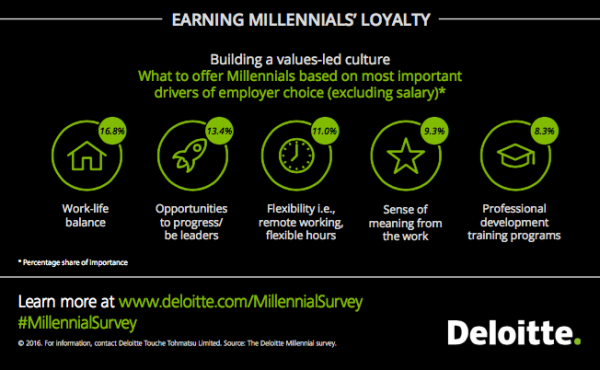
Source: The Deloitte Millennial survey. http://www.deloitte.com/MillennialSurvey
When you engage these workers through a values-led culture they will be more likely to be committed to your organisation’s goals as previous generations.
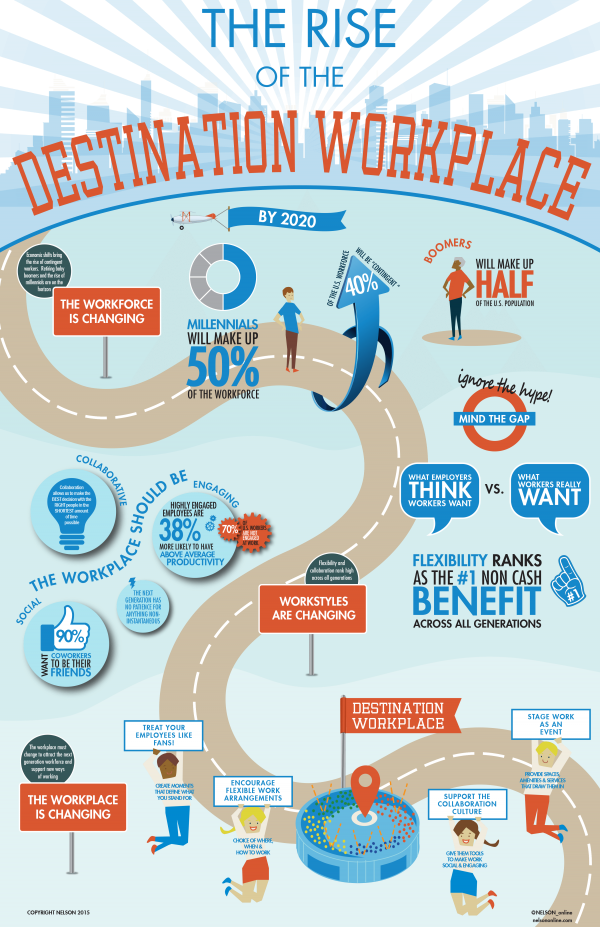
Infographic from Nelson
Embracing Generational Diversity with Team Building
By creating a cohesive environment that embraces generational differences, you’ll be able to maximise the value of organisational performance with a team of workers who balance experience and innovation.
Charity Team Building
Millennials are very globally conscious and want to know their work is contributing to the social well being of the community, or a cause. Engaging Millennials with collaborative volunteer or charity events helps increase their sense of unity and lets them feel they are contributing to a better good.
Cross-Generational Mentoring
Create mentorship programs between office Baby Boomers and younger workers. Institutional knowledge and experience will add a new dimension to the innovative minds of the youngsters, who in turn will boost performance of the oldster with some tech-savvy thinking.
A Harvard Business Review article, Managing People from 5 Generations, says that partnering older workers with younger ones to execute specific projects is becoming more common in the workplace.
“The younger person — who grew up with the internet — teaches the older person about the power of social media to drive business results,” Jeanne Meister, co-author of The 2020 Worplace: How Innovative Companies Attract, Develop and Keep Tomorrow’s Employees Today, tells HBR. “…Mixed-age work teams are another way to promote cross-generational mentoring. “Studies show that colleagues learn more from each other than they do from formal training, which is why it is so important to establish a culture of coaching across age groups.”
Diverse perspectives from all generations will allow for new solutions to old problems or increased innovation with traditional practices to maximise that community feeling in an organisation.
Collaboration
Millennials are inspired by connectivity – be it peer-to-peer or through social media. They need to work together, with a clearly stated goal. Millennials are very social and perhaps more group-oriented than previous generations. Most of their experiences, educational or social, have revolved around groups, whether it be interactive video games with a worldwide audience, group sports or simply connecting with friends on social media. Use a virtual and physical collaborative approach to create buzz among all generations in the organisation.
Experiential Events
Boring boardroom training events will not inspire this generation that loves to experience! Gen Y tends to easily bore so if team building involves a meeting room, make sure it is interactive and allows competition. Encourage skill development and foster learning by immersing this group of people with programs that allow them to personally connect their contributions to the community. Experiential programs provide an environment where individuals apply knowledge and conceptual understanding to problem solving.
It’s also critical every leader understands that their organisation will employ varying personalities, despite generational stereotypes. For a truly successful business with engaged workers, always make sure you consider the motivating factors of each individual worker.
If your looking to motivate your staff or would like to create a values led culture, Give Total Team Building A Call. We will tailor our programs specifically to the individual needs of your organisation. Let us design a unique program that taps into the key motivators of your workforce with a fun, engaging team building event.
SOURCES:
- The 2020 Workplace, Jeanne Meister; Forbes: http://www.forbes.com/sites/rawnshah/2011/04/20/working-with-five-generations-in-the-workplace/#72ebc595759f
- http://www.dummies.com/how-to/content/motivate-millennials-with-social-interaction.html
- HBR: Managing People from 5 Different Generations: https://hbr.org/2014/09/managing-people-from-5-generations
